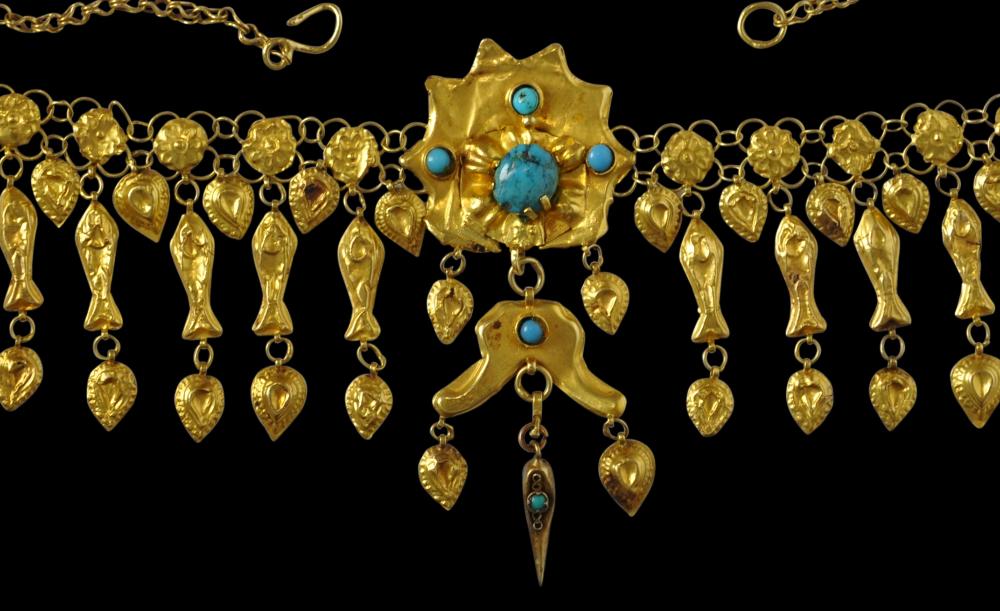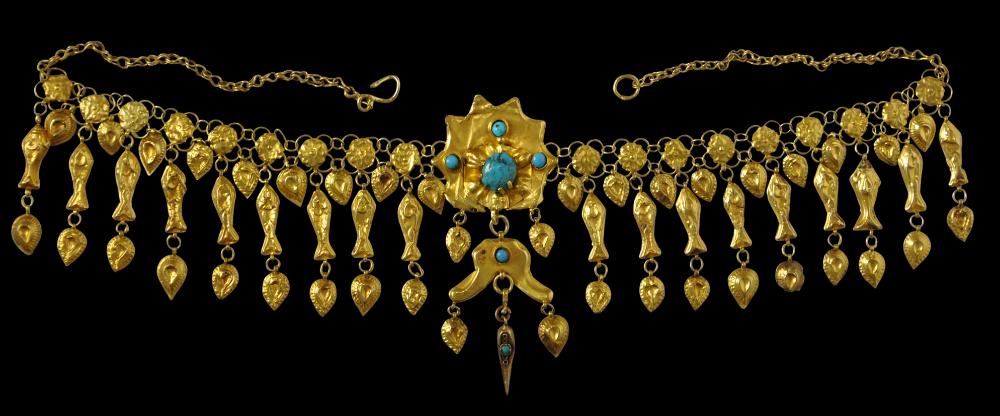
Persian Gold & Turquoise Necklace
Hammered Gold Necklace set with Turquoise
Mashhad, Iran (Persia)
19th-early 20th century
length: 38cm, weight: 15g
This intricate necklace of high-carat, solid gold, comprises a central gold plaque and subsidiary pendant plaques set with turquoise cabochons, and a row of eighteen fish-shaped pendants with additional tear-drop pendants, suspended from a row of gold flowers connected by gold wire hoops.
The fish, which is a repeated motif in this necklace, is an ancient fertility symbol in many Eastern cultures, and traditionally a device for warding off the evil eye.
Related gold necklaces are illustrated in Ben-Ami (2002, pl. 6) and Spink (1996, p. 32).
Mashhad is located in the northeast of Iran, close to the borders of Turkmenistan and Afghanistan. Today, it is the second most populous city in Iran. Its proximity to Afghanistan and Central Asia is borne out in this piece – the use if high-carat, hammered gold together with turquoise, has a long history in Afghanistan. The necklace is related to antecedents that date at least to the first century AD.
There are no losses. The necklace is stable and wearable. The hammered gold components are fine and liable to bend ion account of the purity of the gold but nonetheless are strong. The supporting chains to which the main section of the necklace are attached are not very long. The necklace is fine for a small neck but might need to be augmented with an additional plain chain at the back to allow the main section to hang lower.
Bibliography
Ben-Ami, A. (ed.), In All Their Finery: Jewels from the Jewish World, The Israel Museum, Jerusalem, 2002.
Hiebert, F., & P. Cambon (ed.), Afghanistan: Crossroads of the Ancient World, The British Museum Press, 2011.
Spink, Islamic Jewellery, London, 1996.
Provenance:
UK antique market
Inventory no.: 3390
SOLD




